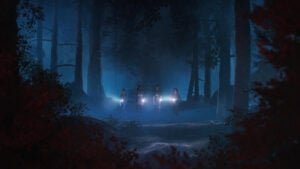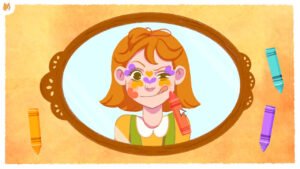Coming off the heels of Necrom, the latest expansion for The Elder Scrolls Online, Matt Firor, the head of ZeniMax Online Studios and game director of the aforementioned title, sat down with me at Gamescom 2023 to discuss the past, present, and future of the massive world he and his studio have been shaping for nearly ten years.
The Elder Scrolls Online, often abbreviated as ESO, is an MMORPG set in the legendary Elder Scrolls series (Skyrim, Oblivion, Morrowind, etc.), which was originally launched in 2014 for Windows and macOS. Initial reception for ESO was middling, but sentiment gradually improved as the team re-released the game as The Elders Scrolls Online: Tamriel Unlimited in 2015 and worked hard on seven major expansions in the time since. Nowadays, ESO is one of the most popular MMORPGs around, boasting a total player base of over 22 million.
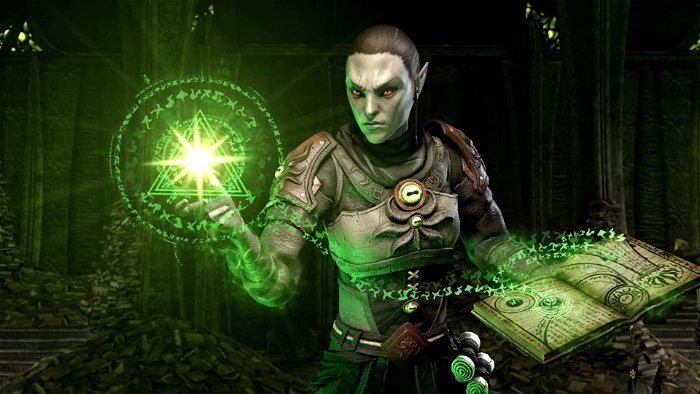
In the interview below, I asked Matt Frior about Elder Scrolls Online’s journey so far, how Necrom paves the way for the future, cross-play and more.
Thank you so much for having me for this interview. It’s a great honour! To break the ice, can you please introduce yourself, your industry experience and the responsibilities you have as the director of Zenimax Online Studios?
Matt Firor: [laughs] How much time do you have? I can do a whole GDC talk on any of those! So, I’m Matt Firor – I’m the Studio Director of Zenimax Online…obviously it’s where The Elder Scrolls Online is made. I’ve been in the industry for 30 years…you may remember me from Dark Age of Camelot, which was a big game 20 years ago. But I have been working at Zenimax Online since 2007.
So, the newest expansion to ESO, Necrom, came out just this June to glowing critic and player reviews. What are the lessons you’ve learned making this new expansion, and what does Necrom mean for the future of the whole game moving forward?
Matt Firor: Well, first, it was great to see Necrom be received so well. I mean, I think all of our Chapters (the in-game name for expansions – Ed.) are good, but Necrom seems to have hit a very good niche…and is a really fun piece of content. We did a few things a little differently because Hermaeus Mora is the Daedric Prince of Knowledge, and he is a little creepy, so we kind of embraced the creepy vibe in this.
You get to go to Apocrypha, and Apocrypha is definitely creepy the story is interesting and talks about parts of Elder Scrolls lore that have not been talked about in a while. So, I think the combination of all those things and our new class, [the] Arcanist, have really made it what it is. And the takeaway from that is that we love that players like that. We made the story a little different than we have in the past, and we’ll probably keep going down that avenue – at least for another year.
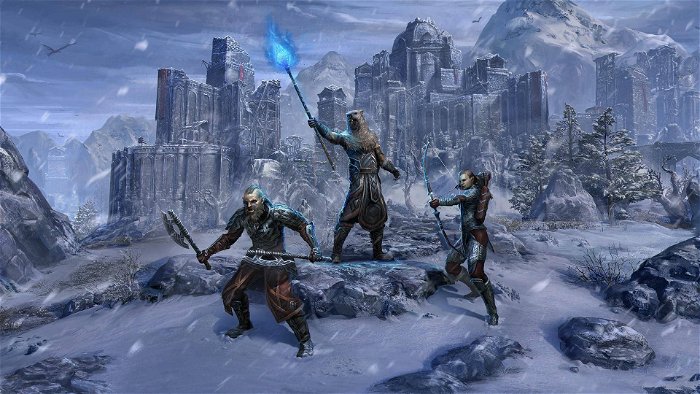
So we should expect more content for Elder Scrolls in the vein of Necrom, right?
Matt Firor: Yeah. And it’s not a spoiler…the Necrom story is the start of a story arc which you’ll learn about as you keep on playing.
So, then, how do you start expanding this massive game, Elder Scrolls? How does an ESO expansion come to be?
Matt Firor: There are two interesting answers to that. One is that after we launched on PC and then launched on consoles, we had a big DLC called Orisinium, and the question that we asked ourselves was: what level is Orisinium? Because back at the time, we were level-based, and we decided to make it so that when you went into the zone, everyone was on the same level. The rewards were appropriate to you, but you could adventure with a level 5 player [even] if you were a level 50 player. And that was so successful because players didn’t even realize it!
They just hit play and went into the zone! And that was a major decision for us…to do One Tamriel (a change in the levelling system that allows every player, in any faction, to travel to any zone – Ed.) in 2016 which changed the whole game. So, that’s how we started to talk about Chapters. But, really, now that we’ve had Morrowind, Summerset, Elsweyr, Greymoor, Blackwood, High Isle and Necrom…we have an established pattern. And the pattern is: it’s a really good story that you can just jump in and play like an Elder Scrolls game.
And you can just play through the zone, play through the story, stop and then come back the next year and play, and that’s fine. And then we have other players that jump in and play the Chapter and like it and like the game and just start playing the rest. And then we, of course, have our players who have been with us, and they play the new Chapter and all the other content that comes out. It’s a really good way to get new players into the game but also to give our existing players much more new content.
You’ve previously discussed the challenge that comes with appeasing both veteran players and newcomers to Elder Scrolls Online (ESO) – how do you and your team plan to cater to both groups moving forward?
Matt Firor: Well, the typical year has been a dungeon, a big Chapter, dungeons and then a story DLC, which is smaller. This year, we did dungeons, a big Chapter, and then the update that just launched, which added some light fixes. And then in the fourth quarter, instead of a story DLC, we’re going to do something called the Endless Archive, which is an endless dungeon — but I’m not talking about that a lot today.
This is to show that we know that there are experienced, veteran players out there who love our stories but they really want some repeatable content where they can get great gear and go out and show how good they are with leaderboards. And that’s what Endless Archive is.
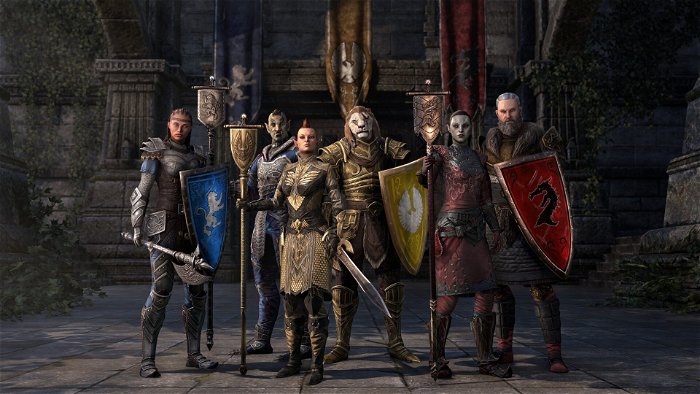
With the Arcanist being ESO’s first new class since 2019, can players expect more classes to be added? And, if so, what would be the cadence of new classes being released?
Matt Firor: We’ll definitely do more classes. The question is when and there are some technical reasons why we can’t just keep adding new classes. We still very much support the original consoles we launched on, and they are a little more limited in memory.
Whenever you add a new class, you add massive amounts of animations and new effects, which take a lot of memory. However, we have done a lot of work over the last year and a half to refine our memory usage in the game so we freed enough memory for the Arcanist, and we’re trying to see if we can do that for the next new class. Don’t know when that will come out, but in that way, we can keep running on the old platforms.
This leads to my next question: should players expect ESO to be cross-gen for the years to come? Or will there be a cut-off point?
Matt Firor: Someday, we’ll have to deprecate the older consoles, but by doing our memory management changes, we’ve bought at least a few more years before we do that. But we’re still working on that, and it’s getting better — better than I thought it would be when we started. So, I think it will be at least a few more years before we have to think about that.
That’s great news! In a similar vein, you and the team have talked about potentially adding cross-play to ESO. Any updates?
Matt Firor: No…except that we’re thinking about it. And it’s something that we want to do, too. This isn’t a desire problem — it’s more about figuring out how to make a ten-year-old MMO with its own cloud infrastructure do cross-play like that. It’s very complicated, but…we’re definitely thinking about it.

Now that you’ve given us a peek at the future, let’s also celebrate the past for a minute. In broad strokes, what do you think is the key to ESO’s continued success?
Matt Firor: It’s fun! [laughs] And it’s a really good Elder Scrolls game, a really good virtual world game and a really good RPG, all at once: we’ve done a lot of work to hit those three different areas. The virtual world part of it was very important during the pandemic cause everybody was home. So, people definitely logged in to ESO during the pandemic and didn’t really do a lot of combat.
They did housing, a lot of guild/social events…you know, when I talk to the media or when people review ESO, they never talk about that…but that aspect is as important to our success as anything else because it’s easy to meet people, it’s easy to communicate with them. And it’s just fun to hang out, you know? People do Shakespeare plays in ESO!
So…my job, every once in a while, is to talk to people and go: remember, this is a virtual world as well as a game! And so, we talk about the RPG side, we talk about levelling systems…and then, the Elder Scrolls side, obviously…but it’s a virtual world as well.
And you have the ESO Tavern for people to meet up in real life, you pen a letter to the community each year…
Matt Firor: That’s the fourth pillar: community. And the community is more important than any of the other three because these types of games require people in the game to make the social systems work and make grouping work and…we have a very, very strong community in ESO. And, I mean, I’m here in Europe right now, and our European community is very strong, and we definitely come over more than once a year to talk at different community events because it’s important!
Shifting gears from the community to your studio: how does the studio you helm evolve alongside ESO?
Matt Firor: I mean…it never slows down, right? So, we definitely had, you know, a hard year before launch and a hard year after launch, making sure to get everything fixed. And then the console [version] came, which was a huge success. But then, in the pandemic, we obviously all went home, and we had to learn how to do our job from home. And we did.
We did that at the same time that our user numbers were greatly increasing, too. It took us a year and a half just to figure that out. We definitely learned and evolved from that, and now I think that, on the other side of the pandemic, we’re definitely more distributed. We now have developers in other parts of the world that we didn’t have before, so…it’s interesting that, as a group, we keep evolving along the game.
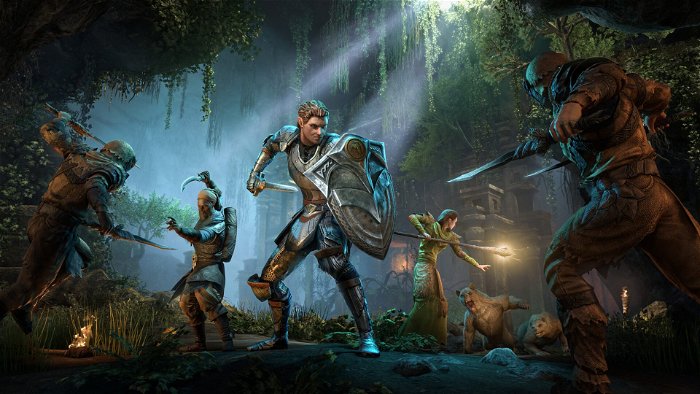
Looking back at your own history with the games industry, did anything from your time working on Dark Age of Camelot influence anything at all for your vision for ESO?
Matt Firor: Every game developer is influenced most by the game they did before, so…of course! [laughs] I mean, Camelot was a different game than ESO because it was a game of its time: we started working on that in 2000 or even late 1999. It was just a different world back then. But many members of the ESO team, at least at the launch of ESO, worked on Camelot, so there is a lot of crossover.
And, of course, Team PVP was at the heart of Dark Age of Camelot, and we have that in ESO as well. But ESO is an evolution, or almost two evolutions farther than Camelot…just in terms of social systems and server technology.
And finally, what are you most proud of with ESO?
Matt Firor: I’m most proud of the team that works on the game because…this is hard! It’s really difficult to make this kind of game! We always talk about the game, but the game is only 50% of the experience. Then there’s the infrastructure that goes underneath it, there are community events…just a whole ecosystem of technology…and I’m really proud of the team for being able to do that because it’s extraordinarily difficult.
You know, ESO launched in 2014 and 2015 on console, and there’s still no other game like it on the market: it’s a very sociable, not level-based, fun, online fantasy role-playing game on multiple platforms. And it’s a hard, difficult market to be in, and the team has really, really done it over the years. And, related to the other question you’ve asked, we’ve evolved over time…the game has changed…the company has changed. So that’s what I’m most proud of, being able to be part of all this.
Thank you so much for your time! Anything else you’d like to emphasize?
Matt Firor: I’d like to once again thank the worldwide community of ESO fans because, like I said earlier, without them, there would be no ESO, no matter how good it is.
The Elder Scrolls Online: Necrom is now available on Steam, EGS, macOS, PS4, PS5, Xbox One and Xbox Series X|S for 39.99 CAD. Monthly subscription not required.


